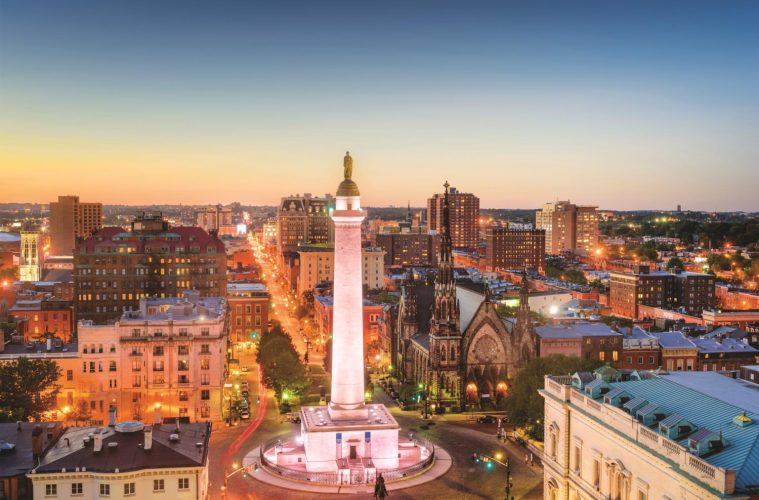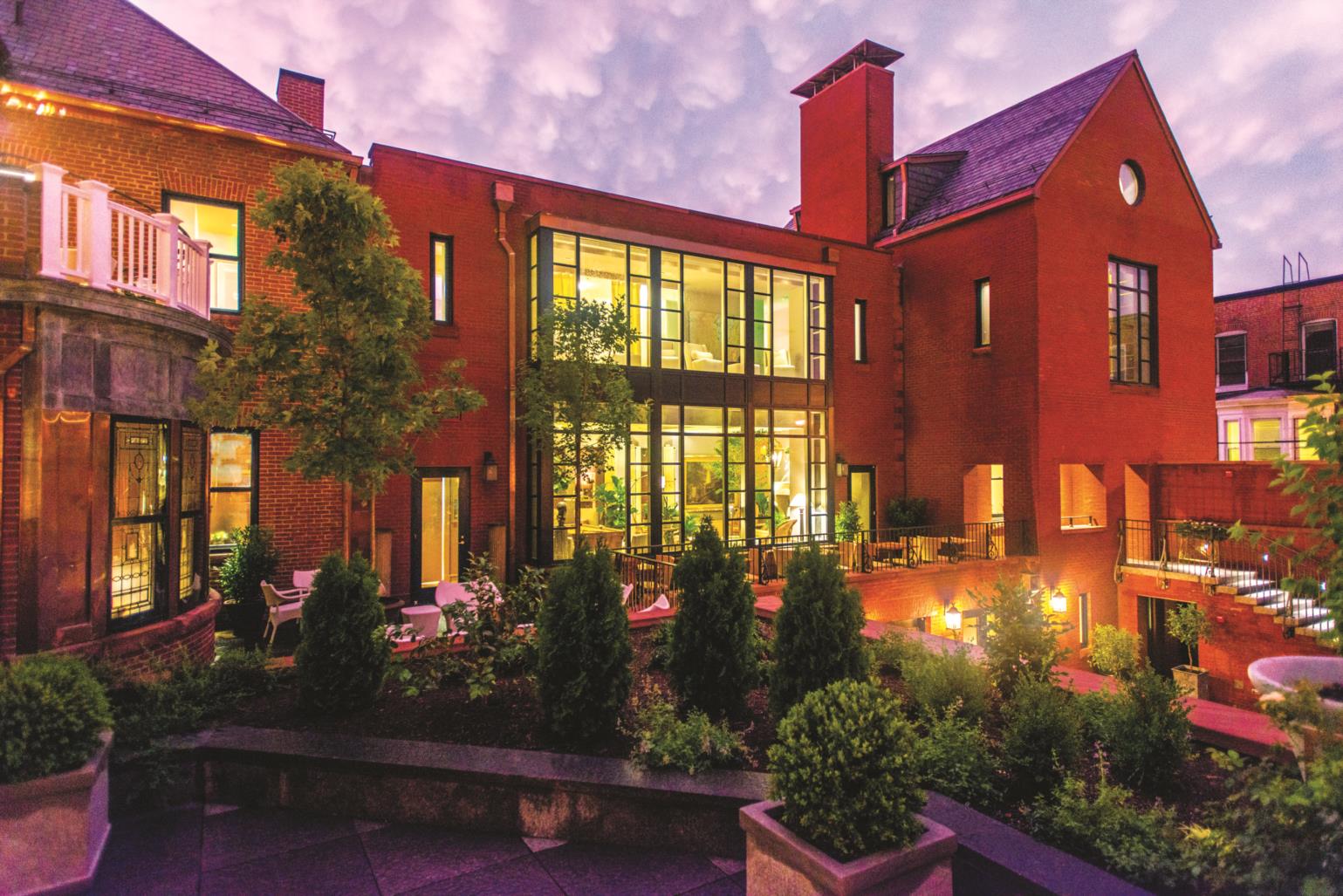 An ideal place to stay is The Ivy Hotel, a former 1890s mansion, which we made our homebase for the next several days. Open two years now, it’s a posh, design-forward hotel and the only Relais & Chateaux property in Maryland. In addition to 18 sumptuously decorated rooms, the hotel has a plant-filled solarium, living room, library, and music room, all with fireplaces and cozy, chic furnishings. A small spa lies on the second floor; the ground floor houses an exercise room and the elegant Magdalena restaurant, specializing in high-end, locally sourced cuisine. Guests receive complimentary tea and scones every afternoon, along with a full gourmet breakfast. Should a cocktail beckon, the Mansion Bar offers self-serve libations from an impressively stocked liquor cabinet.
An ideal place to stay is The Ivy Hotel, a former 1890s mansion, which we made our homebase for the next several days. Open two years now, it’s a posh, design-forward hotel and the only Relais & Chateaux property in Maryland. In addition to 18 sumptuously decorated rooms, the hotel has a plant-filled solarium, living room, library, and music room, all with fireplaces and cozy, chic furnishings. A small spa lies on the second floor; the ground floor houses an exercise room and the elegant Magdalena restaurant, specializing in high-end, locally sourced cuisine. Guests receive complimentary tea and scones every afternoon, along with a full gourmet breakfast. Should a cocktail beckon, the Mansion Bar offers self-serve libations from an impressively stocked liquor cabinet.
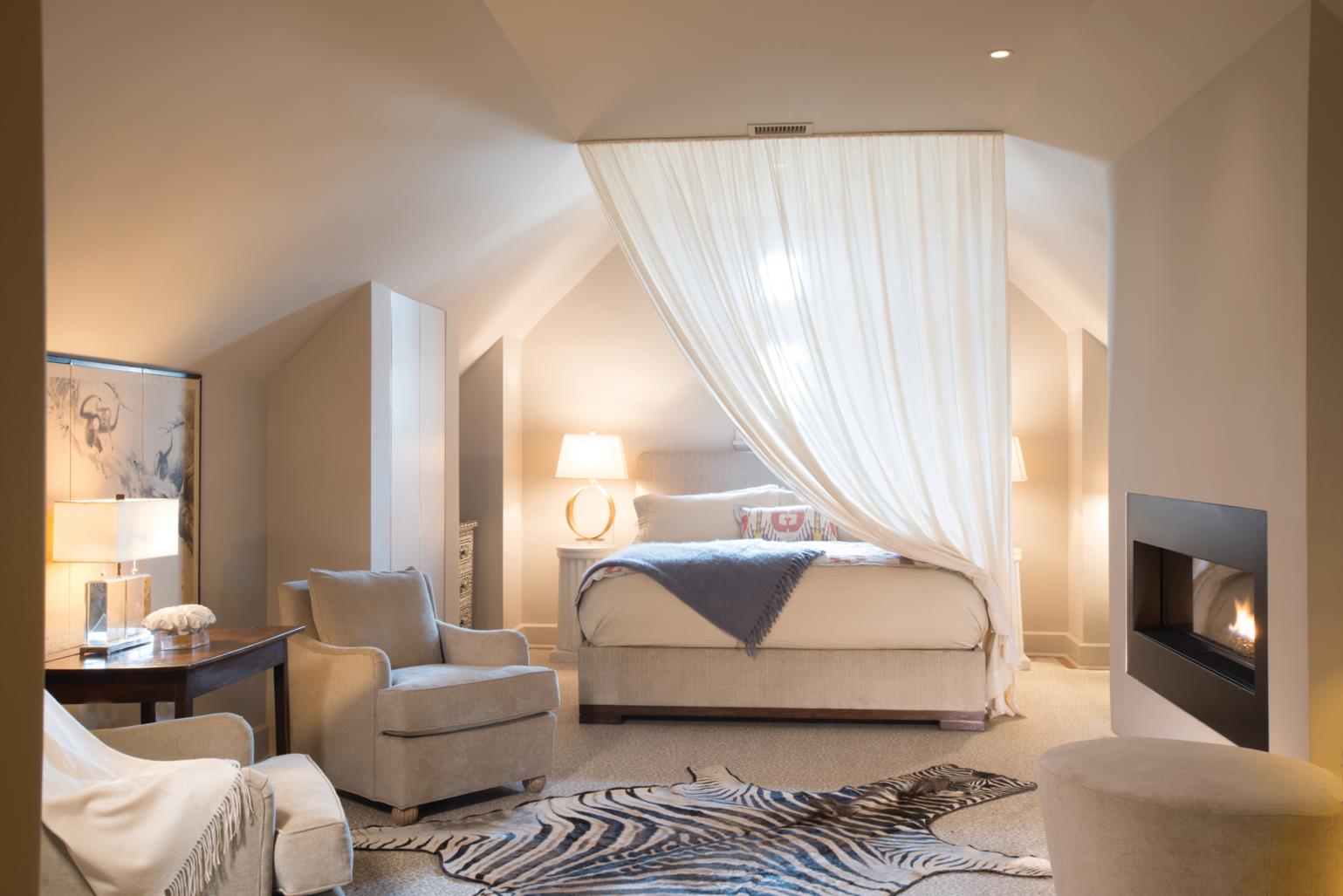 As an indication of Baltimore’s urban renaissance, The Ivy Hotel resides in the Mount Vernon neighborhood, once challenged by crime but now considered the cultural heart of the city. Listed on the National Register of Historic Places, Mount Vernon Place offers one of the finest examples of urban planning in the United States, which you can learn about in more depth on a historic walking tour through an organization called the Baltimore National Heritage Area. Our sweet guide, Doris, pointed out some of the neighborhood’s highlights, including a smaller version of the Washington Monument, which was mostly completed in 1829 and was the first major structure to honor President Washington (climb to the top for stunning views of the city). Doris also took us to the Johns Hopkins Peabody Institute, the city’s premier performing arts school and home to the striking George Peabody Library, with its five tiers of decorative white cast iron balconied stacks rising 61 feet from the floor to a skylight. She also pointed out the Walters Art Museum, founded in 1934 by philanthropist Henry Walters, who wanted to share his extensive art collection with the public (free of charge). The museum now displays works spanning more than seven millennia, ranging from Egyptian mummies to House of Faberge Russian Imperial eggs.
As an indication of Baltimore’s urban renaissance, The Ivy Hotel resides in the Mount Vernon neighborhood, once challenged by crime but now considered the cultural heart of the city. Listed on the National Register of Historic Places, Mount Vernon Place offers one of the finest examples of urban planning in the United States, which you can learn about in more depth on a historic walking tour through an organization called the Baltimore National Heritage Area. Our sweet guide, Doris, pointed out some of the neighborhood’s highlights, including a smaller version of the Washington Monument, which was mostly completed in 1829 and was the first major structure to honor President Washington (climb to the top for stunning views of the city). Doris also took us to the Johns Hopkins Peabody Institute, the city’s premier performing arts school and home to the striking George Peabody Library, with its five tiers of decorative white cast iron balconied stacks rising 61 feet from the floor to a skylight. She also pointed out the Walters Art Museum, founded in 1934 by philanthropist Henry Walters, who wanted to share his extensive art collection with the public (free of charge). The museum now displays works spanning more than seven millennia, ranging from Egyptian mummies to House of Faberge Russian Imperial eggs.
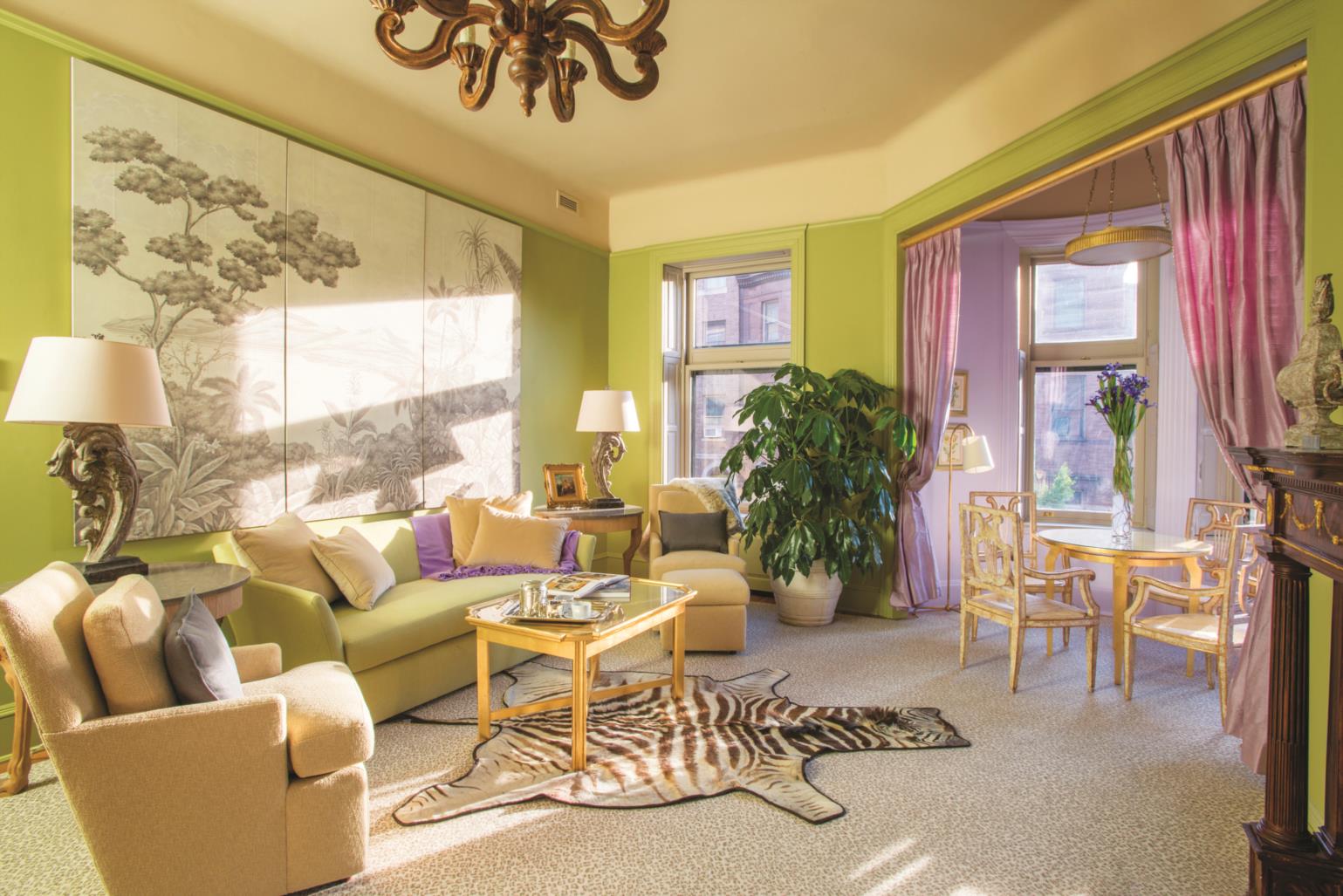 Thanks to all those millennials, makers, and entrepreneurs, Baltimore’s food scene has exploded over the past several years. Many of the city’s newest restaurants source their ingredients from nearby farms, food producers, and artisans and support the movement toward communal, handcrafted, and locally sourced meals.
Dinner our first night was at the newly open Minnow, a lively, creative seafood bistro. Everything we ordered was a home run, from the juicy fried oysters with three different toppings (spicy aioli, Brussels sprouts and lardon, and fennel-saffron) to the rockfish with charred broccoli and chorizo. Another winner was Gunther & Co., set in the former Gunther Brewing Co. With brick walls, soaring ceilings, and exposed pipes, this white tablecloth eatery celebrates the region’s bounty with dishes like roasted shrimp and sausage over Virginia grits and succulent, golden chicken with lentils, local carrots, and blistered onions. Other foodie destinations include The Bluebird Cocktail Room, for the perfect Paloma and seasonal comfort food, and Woodberry Kitchen, set in an old refinery and specializing in farm-forward cooking. Bar Vasquez serves Argentinian fare in a sleek space with a 10-seat whiskey bar, while Dooby’s Korean-inspired café near The Ivy Hotel draws locals (with their laptops) to savor caramel-miso lattes and pork belly eggs Benedict on steamed buns.
Thanks to all those millennials, makers, and entrepreneurs, Baltimore’s food scene has exploded over the past several years. Many of the city’s newest restaurants source their ingredients from nearby farms, food producers, and artisans and support the movement toward communal, handcrafted, and locally sourced meals.
Dinner our first night was at the newly open Minnow, a lively, creative seafood bistro. Everything we ordered was a home run, from the juicy fried oysters with three different toppings (spicy aioli, Brussels sprouts and lardon, and fennel-saffron) to the rockfish with charred broccoli and chorizo. Another winner was Gunther & Co., set in the former Gunther Brewing Co. With brick walls, soaring ceilings, and exposed pipes, this white tablecloth eatery celebrates the region’s bounty with dishes like roasted shrimp and sausage over Virginia grits and succulent, golden chicken with lentils, local carrots, and blistered onions. Other foodie destinations include The Bluebird Cocktail Room, for the perfect Paloma and seasonal comfort food, and Woodberry Kitchen, set in an old refinery and specializing in farm-forward cooking. Bar Vasquez serves Argentinian fare in a sleek space with a 10-seat whiskey bar, while Dooby’s Korean-inspired café near The Ivy Hotel draws locals (with their laptops) to savor caramel-miso lattes and pork belly eggs Benedict on steamed buns.
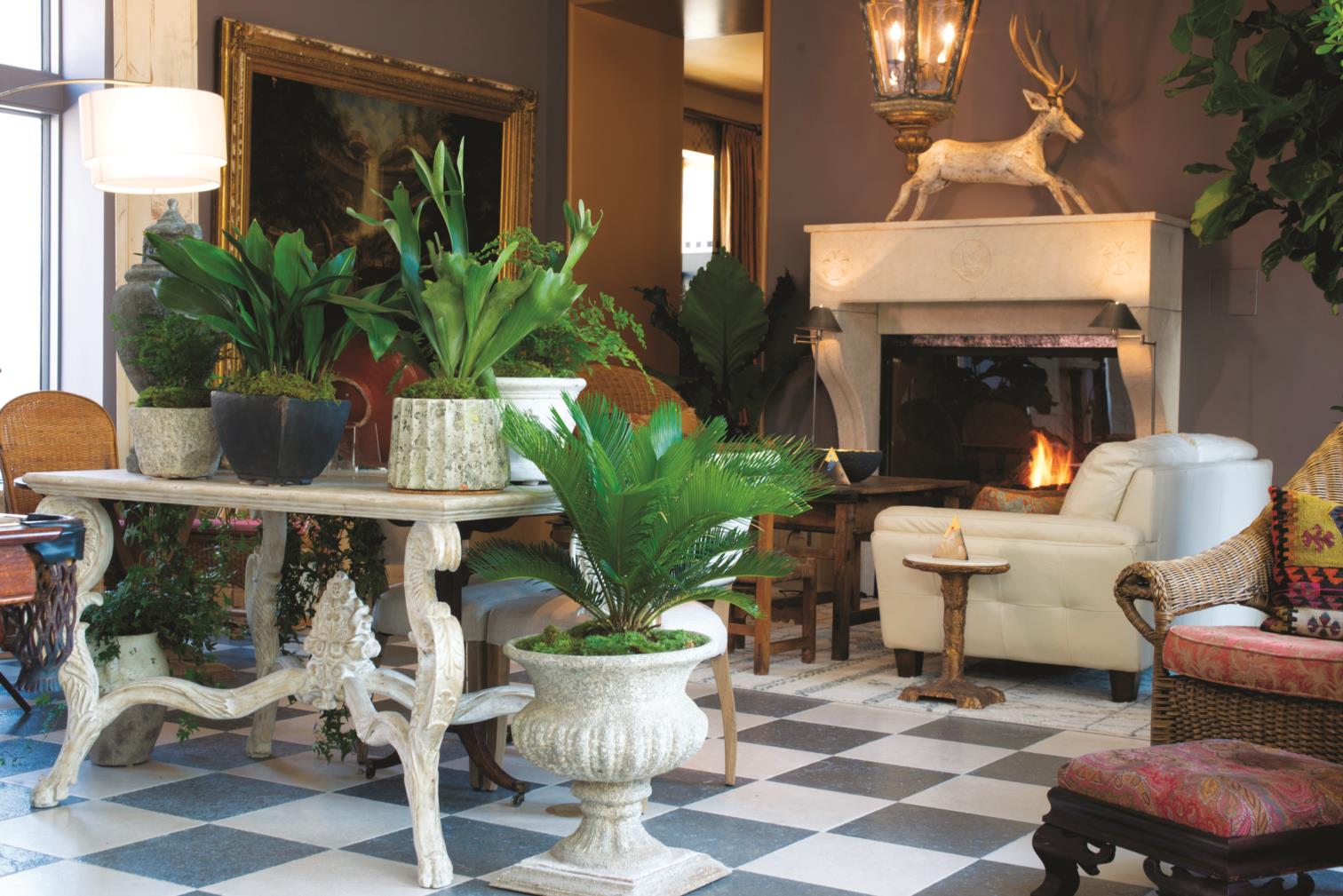 Then there are Baltimore’s food halls, including the historic Lexington Market, which opened in 1782 and has nearly 100 vendors selling everything from fresh produce and meats to chicken and waffles. Relatively new is Mount Vernon Marketplace, home to 14 purveyors selling Korean bibimbap, street tacos, boozy milkshakes, and more. The most recently opened food hall is R. House, which set up shop in a former auto showroom in the up-and-coming Remington neighborhood. Grab a sushi burrito, blood sausage arepa, or some octopus salad and eggplant fries from one of the 10 food stalls or the pop-up chef’s kitchen, and then settle down at a communal table with a drink from the central bar.
Then there are Baltimore’s food halls, including the historic Lexington Market, which opened in 1782 and has nearly 100 vendors selling everything from fresh produce and meats to chicken and waffles. Relatively new is Mount Vernon Marketplace, home to 14 purveyors selling Korean bibimbap, street tacos, boozy milkshakes, and more. The most recently opened food hall is R. House, which set up shop in a former auto showroom in the up-and-coming Remington neighborhood. Grab a sushi burrito, blood sausage arepa, or some octopus salad and eggplant fries from one of the 10 food stalls or the pop-up chef’s kitchen, and then settle down at a communal table with a drink from the central bar.
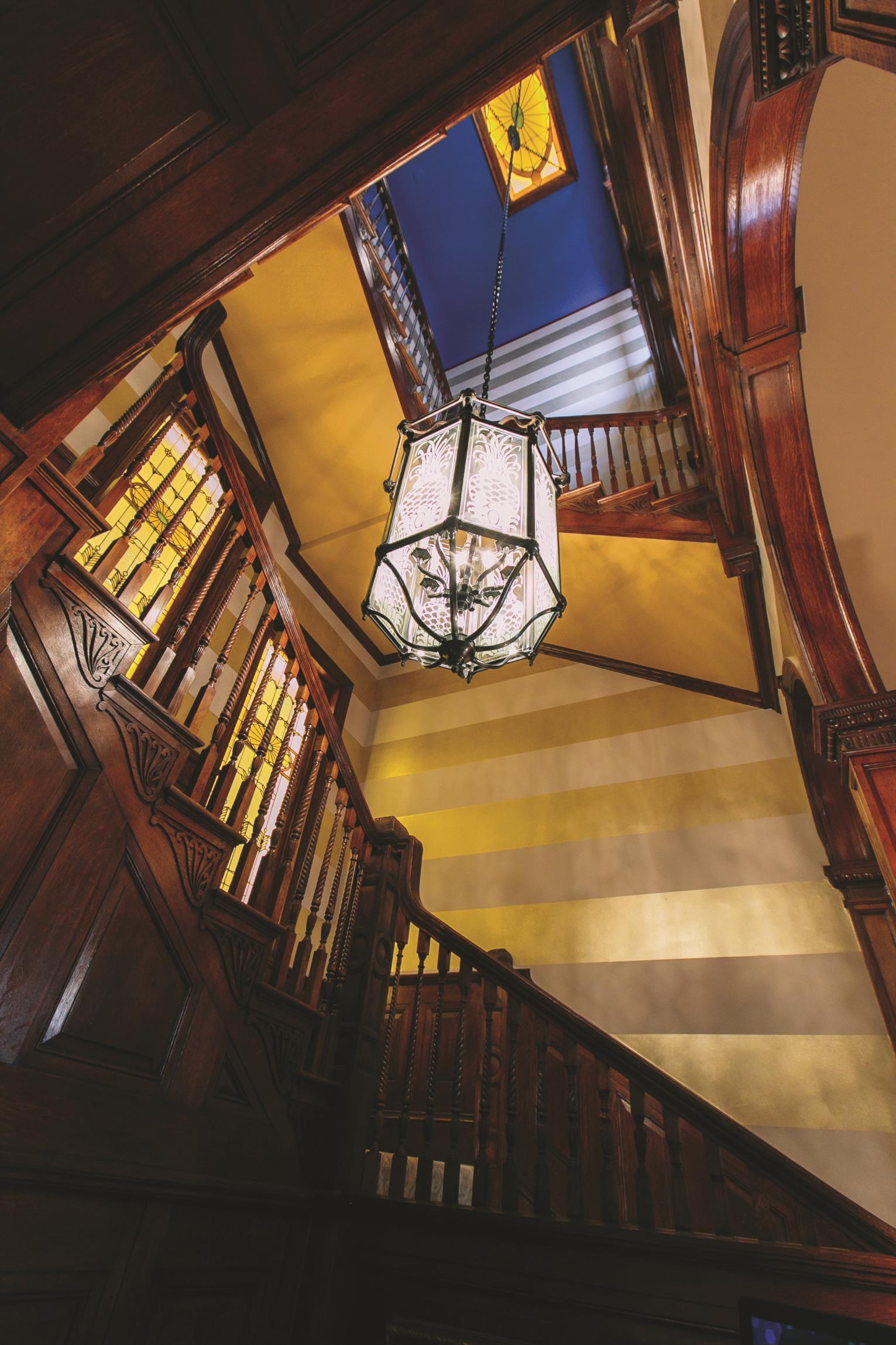 Beyond all this eating, you’ll want to soak up the city’s charms, including a visit to the American Visionary Art Museum, which showcases masterful creations from mainly self-taught artists. In addition to its many temporary exhibits, the museum has over 4,000 permanent works, including a 16-foot-long replica of the Lusitania made from toothpicks! Also recommended is the Light Street Cycles Waterfront Tour, a guided bicycle ride that loops you around Baltimore’s Inner Harbor and through several neighborhoods, including visiting Little Italy to see the childhood home of singer Billie Holiday. Then there are the cobbled streets of the Fell’s Point neighborhood to discover, along with the quirky shops and vintage stores along West 36th Street in the Hampden neighborhood. And if you want to catch a baseball game at Oriole Park at Camden Yards, a new initiative allows kids up to age nine to attend games for free.
Beyond all this eating, you’ll want to soak up the city’s charms, including a visit to the American Visionary Art Museum, which showcases masterful creations from mainly self-taught artists. In addition to its many temporary exhibits, the museum has over 4,000 permanent works, including a 16-foot-long replica of the Lusitania made from toothpicks! Also recommended is the Light Street Cycles Waterfront Tour, a guided bicycle ride that loops you around Baltimore’s Inner Harbor and through several neighborhoods, including visiting Little Italy to see the childhood home of singer Billie Holiday. Then there are the cobbled streets of the Fell’s Point neighborhood to discover, along with the quirky shops and vintage stores along West 36th Street in the Hampden neighborhood. And if you want to catch a baseball game at Oriole Park at Camden Yards, a new initiative allows kids up to age nine to attend games for free.
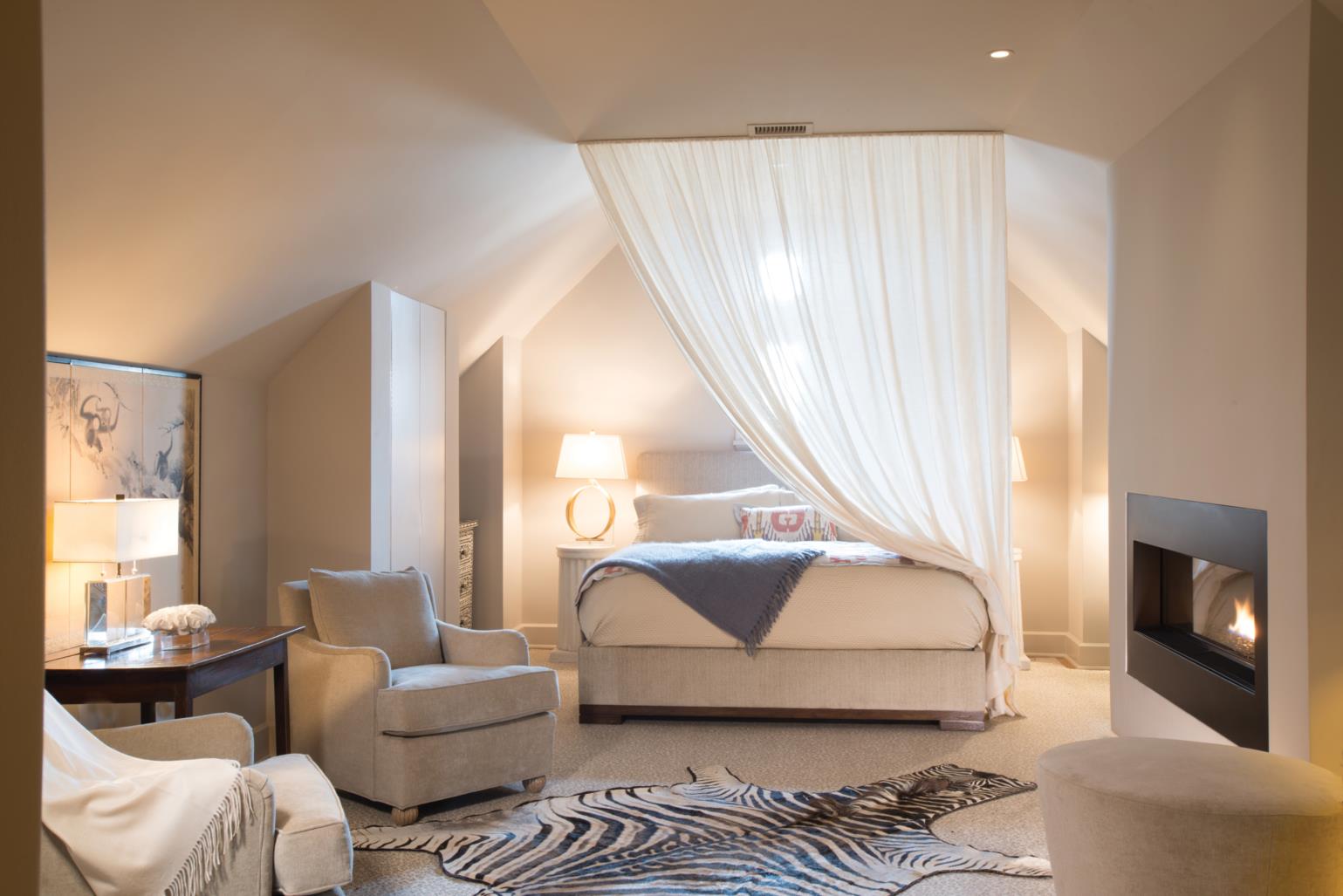 Clearly, Baltimore has far more to offer than can fill a weekend. But given how accessible it is to Boston, you can plan a visit and then plan to come back.
theivybaltimore.com
Clearly, Baltimore has far more to offer than can fill a weekend. But given how accessible it is to Boston, you can plan a visit and then plan to come back.
theivybaltimore.com

